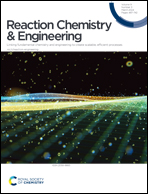Synthesis and properties of a series of sulfonate ester photoacid generators
Abstract
A total of six sulfonate polymeric nonionic photoacid generators (PAGs) have been synthesised and subjected to comprehensive characterization for their application in photoresist materials. The structures and properties of the compounds were confirmed through the utilisation of 1H NMR, 13C NMR, and UV measurements. The PAGs obtained displayed thermal stability up to 180 °C. PAGs exhibit a wide absorption spectrum, with maximum UV absorption ranging from 220 nm to 245 nm, rendering it highly applicable. Meanwhile, a spectrophotometric approach was employed to create an exposure acid production assay, which utilised rhodamine B as the acid sensor. The application of UV light at a wavelength of 254 nm to acetonitrile (ACN) solutions containing PAGs caused the dissociation of very unstable N–O bonds. The process resulted in the formation of the corresponding acid and 1,8-naphthalimide products, yielding high quantum efficiency and chemical conversion. Furthermore, based on the analysis of the decomposition of six PAGs and acid production tests, we have put forth a potential mechanism to explain the photogeneration of carboxylic and sulfonic acids. The mechanism for the homolytic cleavage of the N–O bond to generate acid was backed by calculations using time-dependent density functional theory (TD-DFT). The study of the synthesis and performance of sulfonate-based PAGs can help to gain a deeper understanding of the advantages and disadvantages of such nonionic PAGs, and guide the direction of the rational design of subsequent novel PAGs to achieve high acid production efficiency and a broad UV absorption range.



 Please wait while we load your content...
Please wait while we load your content...